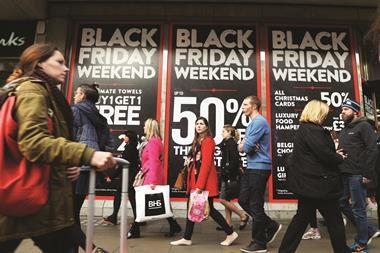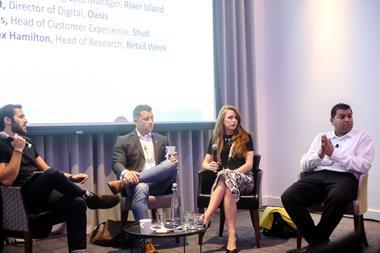We can learn so much from what happened at last year’s Black Friday, but perhaps the most salutary lesson is all stakeholders must work together and not over-promise to the customer.
We can learn so much from what happened at last year’s Black Friday, but perhaps the most salutary lesson is all stakeholders must work together and not over-promise to the customer.
We are currently tracking delivery volumes at 13% up on 2014, but as we know from experience, there can be unexpected peaks and troughs which adversely affect the figures.
Most retailers are already in discussion with carriers and delivery services to put frameworks in place for the peak period; those that are not need to catch up quickly.
Agreements can be reached about the level of parcel volumes that carriers can handle efficiently within the timeframes promised to customers.
Be prepared
If a retailer decides to line up second- and third-tier carriers, it would be a good idea to ensure some orders are handled by them now, so both parties can get used to working together.
Retailers using a delivery management platform will have the flexibility to select different carrier options during the peak period. Switching helps to keep volume levels within the parameters agreed with carriers beforehand and also reassures mid-tier retailers that they won’t be ignored in favour of a larger player.
Because arrangements with carriers are made in advance, the delivery management platform will automatically assign a different carrier if the agreed number of trailers, or the agreed number of parcels, has been reached.
This level of automation ensures that the process moves forward smoothly, removing barriers to delivery and ensuring that parcels arrive on time.
Feedback from carriers and retailers alike after last year’s challenges indicated that a lack of clear communication didn’t help when the ‘peak tsunami’ hit.
The strength of the supply chain relationship is absolutely crucial in ironing out any misunderstandings, and at the heart of this is open discussion and clarity around what is expected and what can actually be achieved.
An extra 20% volume cannot be negotiated once demand starts to grow; that’s the point at which a retailer must switch to another carrier.
Be flexible
Communication must also be clear with the consumer. Over the past year, delivery service options have become much broader and customers are accustomed to third-party pick-up and drop-off, same-day delivery, Saturday and Sunday delivery, etc.
These help retailers to differentiate themselves and may be an important part of their peak campaign.
If orders rise to such an extent during the peak that premium delivery options are no longer easily fulfilled, retailers must be flexible and inform customers that delivery will be within 48 hours, three days, even five days and, if it suits them better, they can click-and-collect from stores.
If the consumer is clear that these are their options, they will select accordingly. Much of the shopping being done during peak is for Christmas, which removes rather than increases the urgency, and it also makes it less necessary for retailers to compete by rigidly sticking to a next-day delivery promise.
What the customer will value most is that a retailer has delivered their parcel when they said they would.
At this stage we are collectively ready to deal with the peak tsunami and, even if orders increase four-fold, we are better positioned to maximise the massive opportunity that it affords us all.
- Kees de Vos is chief product and marketing officer at logistics firm MetaPack


























No comments yet